
Spacing and gaps in teeth, or diastema, are noticeable spaces between two or more teeth, commonly between the upper front teeth. Causes include small-sized teeth relative to the jaw, missing teeth, or habits like thumb sucking affecting tooth growth and spacing. An oversized labial frenum can also cause gaps. While often seen as cosmetic, excessive spacing can impact oral hygiene and teeth functionality. Consulting a dental professional is advised for assessment and treatment options.
A diastema is simply a gap between two front teeth. The space between the lower front teeth is known as mandibular diastema, while the gap between the two upper front teeth is a median or midline diastema.
Research shows that about 1.6 – 25.4% of people in the UK have a diastema. Babies can also have gaps between their teeth, but their jaw and teeth are still developing. When children grow into adults, the gaps disappear naturally. If the spaces remain in adulthood, seek advice from an orthodontist if you would like to close the gaps.
Improving your dental hygiene is important if you have spaces between your teeth. Ensure you use interdental brushes or water floss.
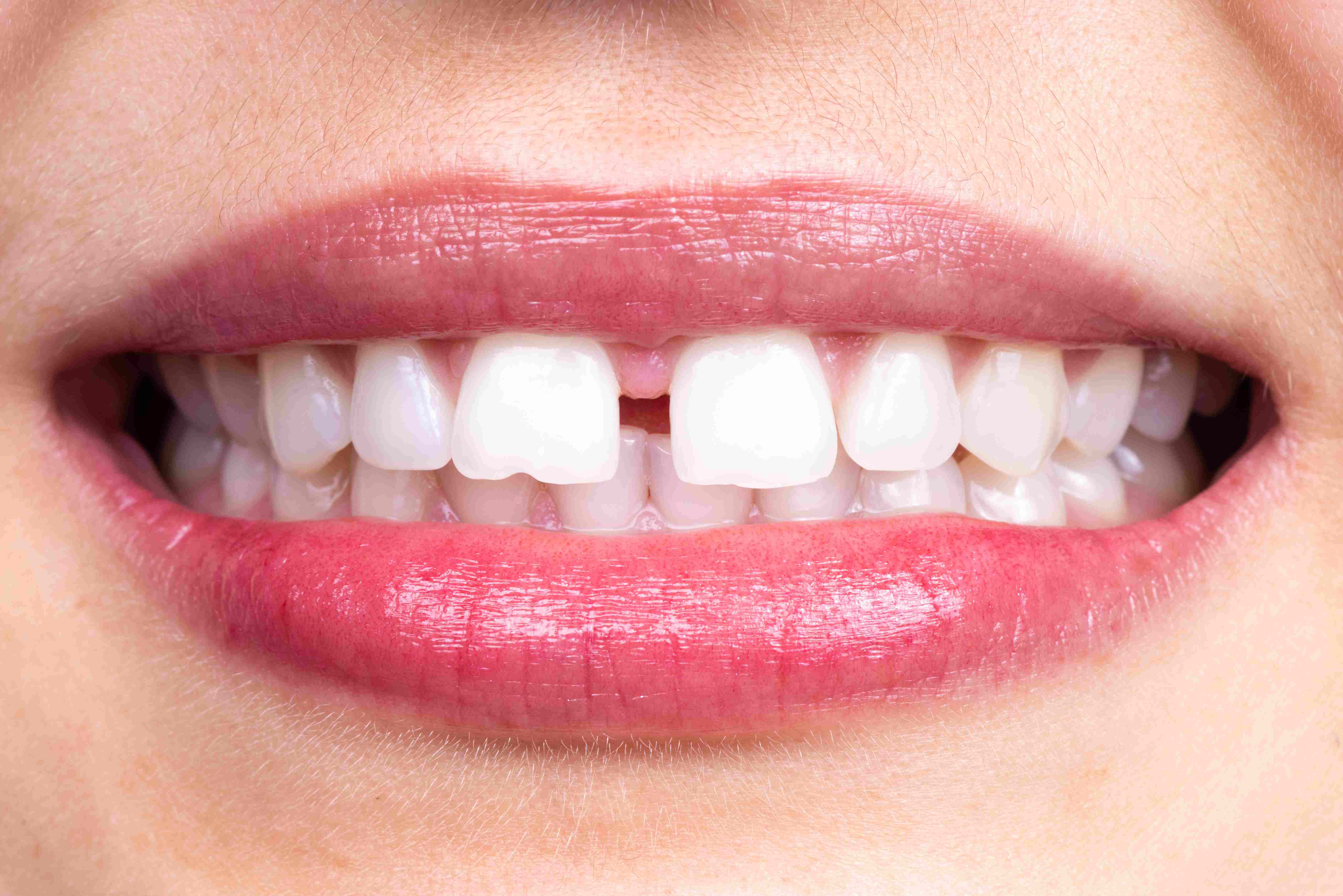
Several factors can cause diastema. The primary reason for a diastema is non-uniform jaw and teeth size. If you have small teeth or a big jaw, excess space will be in the mouth.
Another factor that causes a gap in the front teeth is the growth of extra tissue above the teeth. The small skin between the upper front teeth and the lip is called the frenum. If the frenum overgrows, it can leave a space between the two top front teeth.
Some behavioural factors may also cause a gap in the front teeth, such as
If your tongue pushes against your lower teeth when swallowing, you may have a mandibular diastema from tongue thrusting.
If advanced gum disease (periodontitis) is present, the teeth will spread apart. Loss of the bone in the jaw makes the teeth unable to resist movement, leading to gaps.

The second incisor (the tooth beside the front two teeth) can develop with a different shape. This leads to a phenomenon called peg lateral. This tooth will have a small pointy shape. Due to the small size of peg laterals, gaps will be present on both sides. Composite bonding, veneers or dental crowns can mask the shape of a peg lateral.
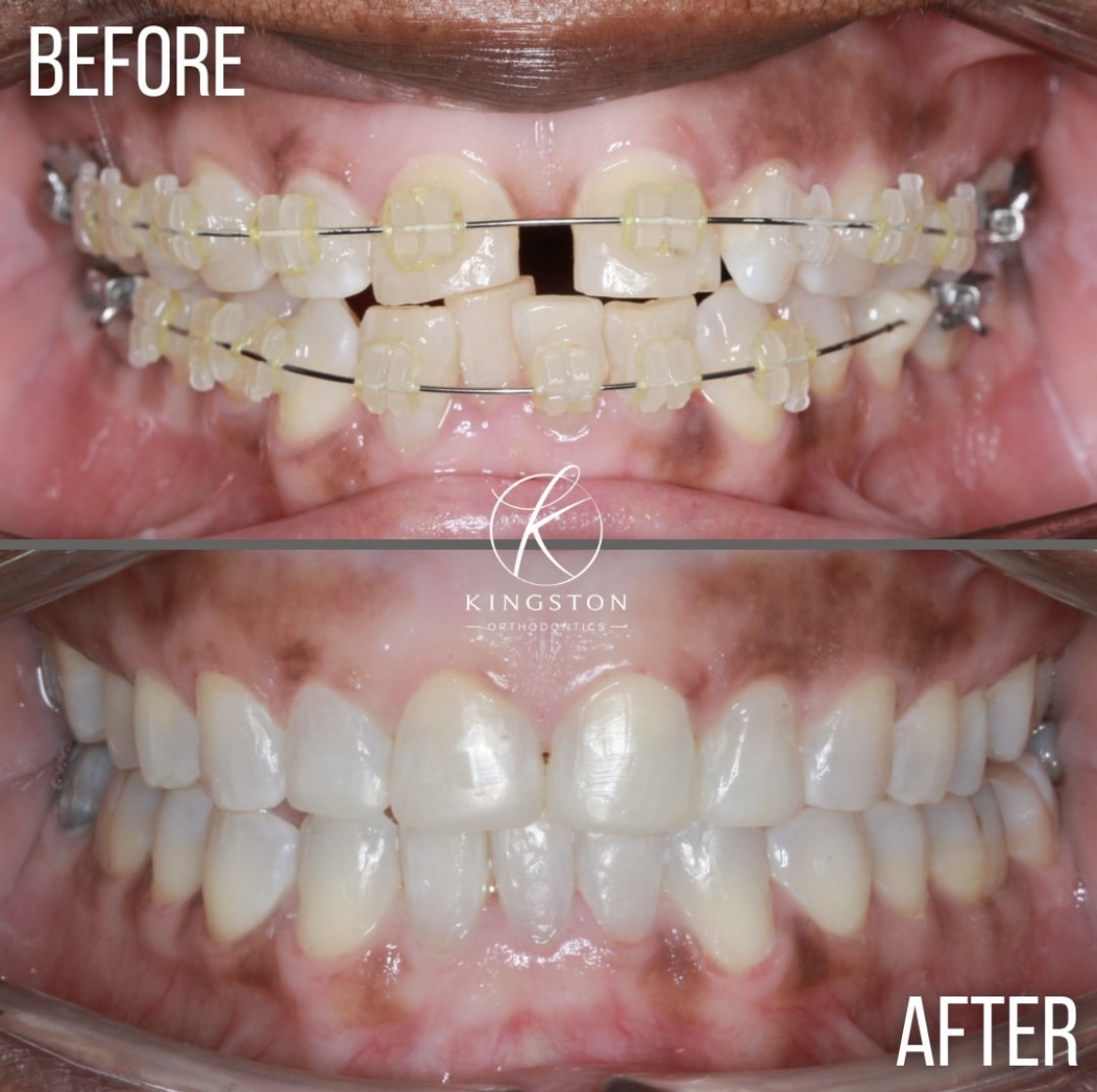
Closing a diastema is usually a simple procedure. Several treatment options are available, including orthodontics. Every case is unique, so your dentist and orthodontist will recommend the best treatment course.
Braces can gradually adjust the teeth to close the spaces between them. They are usually suitable for closing larger gaps, while other treatment options can close small gaps.
Braces for closing gaps between all the teeth are ideal in adulthood when all the adult teeth have grown in fully. A child is unsuitable for this treatment because their jaw can still grow differently from their teeth. Closing gaps between the front teeth in children is possible with braces.
Invisalign clear aligners are a good alternative for closing gaps between the teeth without using fixed braces. Unlike traditional braces, Invisalign uses almost invisible tremovable aligners suitable for about 90% of orthodontic cases.
Your orthodontist will assess your teeth and jaw to determine your suitability for Invisalign treatment. Invisalign has become a household name for correcting different orthodontic issues.
Braces and aligners aren't the only options for closing gaps between teeth. Other options include composite bonding, veneers and porcelain veneers. However, these options are better when you want to close only one or two small gaps. Braces may be the best solution if you have multiple or large gaps between several teeth.
You can work with your orthodontist to know the right treatment for your case, as it is important to understand the advantages and disadvantages of each treatment option. If your orthodontist feels that braces are not the right treatment option for you then you will need to see your general dentist to discuss the option of composite bonding, veneers or crowns.
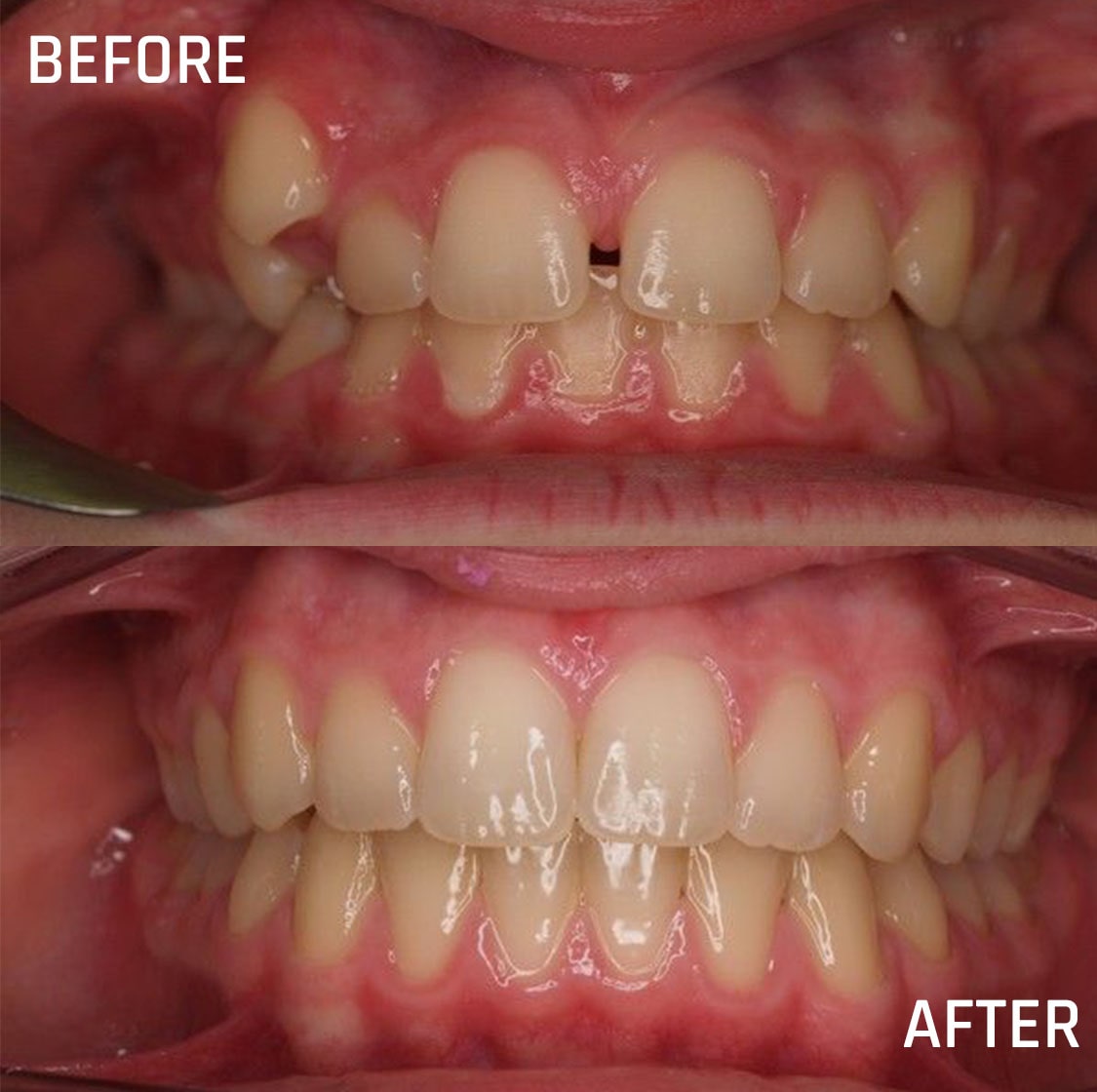
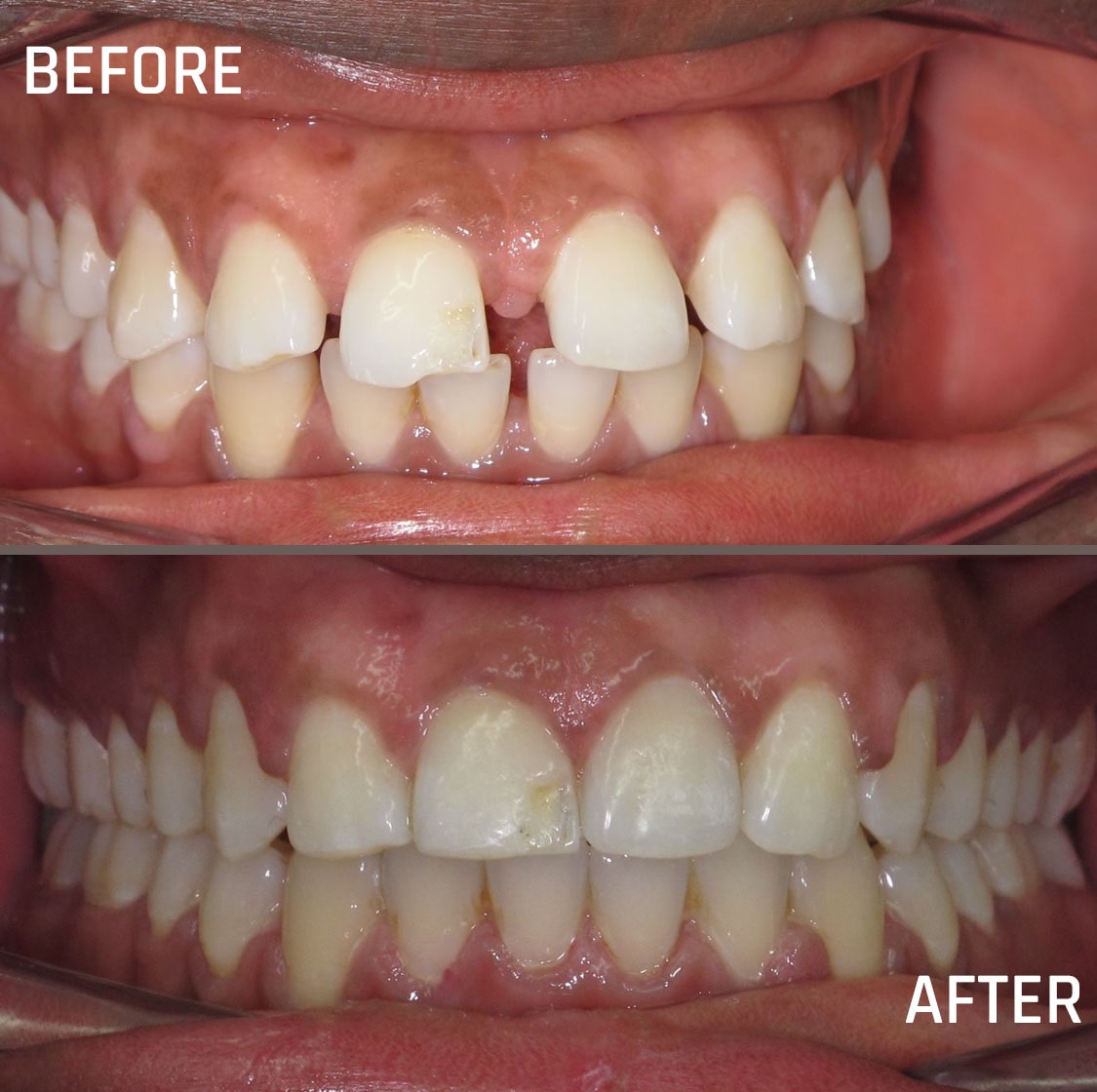
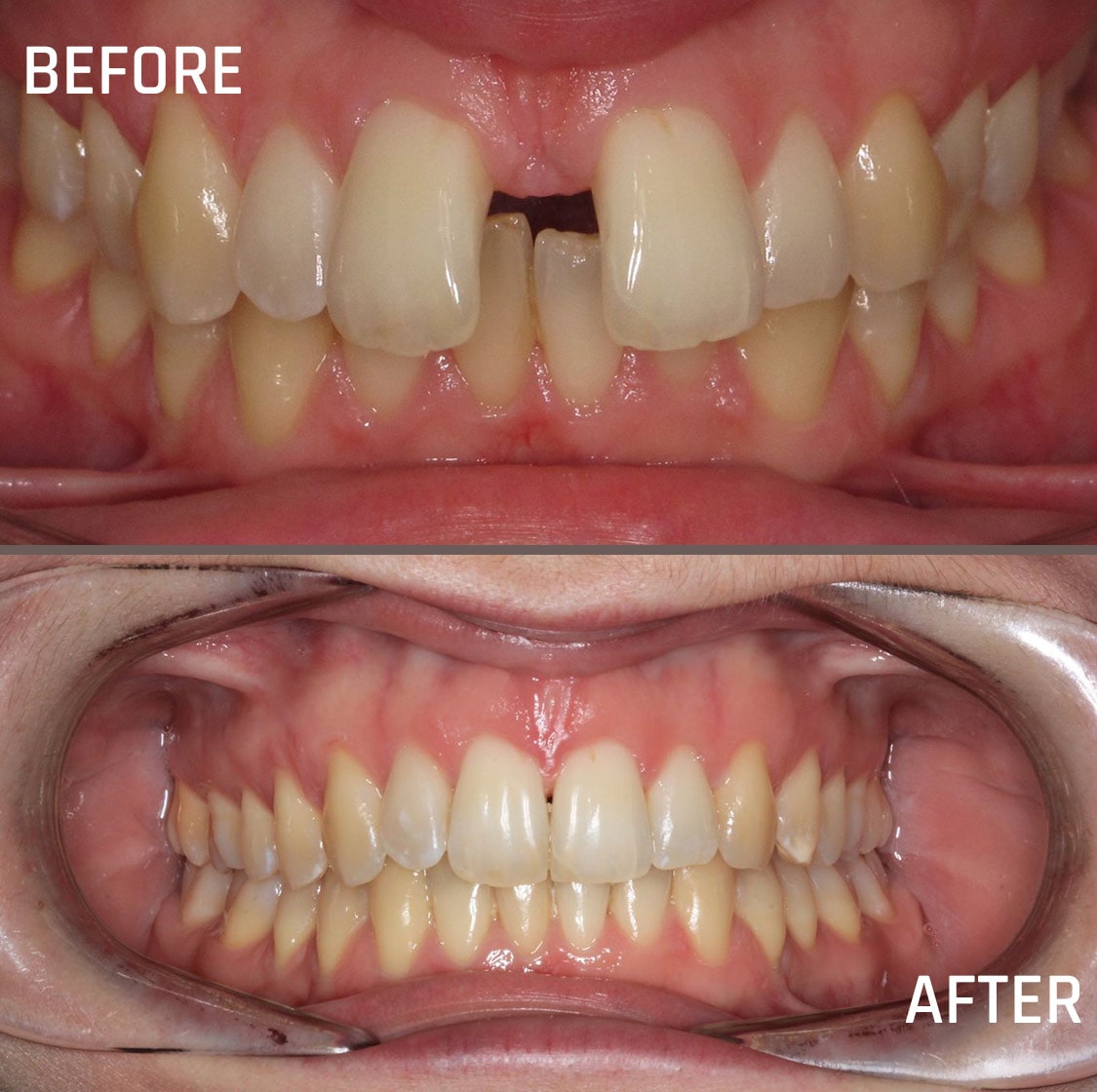
People who need mild orthodontic treatment can use Invisalign i7 or Lite for diastema closure which starts at about £1950. Invisalign Full is best for major orthodontic treatment. You can consult your orthodontist for the exact cost of your treatment.
Space closure isn't medically necessary, so the NHS doesn't offer financial assistance. However, serious cases of spacing in children resulting from severe hypodontia (naturally missing teeth) may qualify for braces within the NHS.
You can contact Kingston Orthodontics at 0203 002 2501 to book an appointment for your gapped teeth treatment or to get more information on our different treatment options.
Gaps between front teeth are very normal in children and they generally close as the adult teeth grow in to the mouth. Any remaining gaps can be closed with braces.
Retainers are removable and hold the teeth in place after braces have actively moved the teeth into the ideal position. Retainers are not generally used to close gaps.
Babies usually have gappy teeth, their jaw is still growing, which may be faster than teeth eruption. Diastemas also occurs when there is a mix of milk and adult teeth.
If the child has large gaps and the teeth are fully developed, consult an orthodontist for the best advice and treatment recommendations.
Braces correct the position of the teeth to improve your smile. If you are unhappy with the result of your braces treatment, consult your orthodontist who carried out your treatment. Usually your orthodontist will not remove your braces until you are perfectly happy with the result. If spacing is still present at the end of treatment because full gap closure can’t be achieved then your orthodontist will let you know and liaise with your dentist to decide on the best way to close the excess space. Ensure you wear your retainers after braces according to the orthodontist's instructions to keep your teeth steady and in the right position.
No evidence shows that dental flossing can cause gaps between teeth. Consult your dentist, orthodontist or the hygienist for a guide on how to floss properly.
Ageing can cause the teeth to shift and move apart. This may cause gaps between the teeth to get bigger with age. Braces can treat spacing, but consult your dentist to be sure your tooth movement isn't from gum disease.
The time needed to close the gap between the teeth is a deciding factor for many people. Diastema treatment with braces can take 6-9 months, but more complex cases with larger and more spacing can take much longer. An orthodontist can examine your teeth and discuss your treatment duration and brace options with you.

Spread the cost of any treatment
We are here to help you achieve the perfect – and affordable – smile so please talk to us about our popular interest-free payment plans. Spread the cost and relax – secure in the knowledge that your treatment will take place on time and on budget.